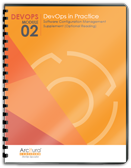The patterns.arcitura.com site has been retired. We at Arcitura Education have enjoyed sharing this content with the IT community. However, this content is now somewhat outdated as it was originally borrowed from an earlier generation of courses from select Arcitura training and certification programs. Those programs have since evolved and grown, and the courses in those programs now contain the latest patterns-related content.
You can continue to access the current version of this content via the Arcitura online eLearning platform. View pages 10-15 of the Course Module Reference Supplement to locate patterns, mechanisms and metrics within the curriculum.
As a patterns.arcitura.com site user, you can request access to this platform by contacting us at info@arcitura.com. Be sure to use the Course Module Reference Supplement to indicate which types of patterns or mechanisms you are looking for, and we will then try to arrange for you to receive access to the corresponding course documents that contain that content.
The vendor-neutral Arcitura accreditation curriculum is constantly growing with new courses that will introduce many more pattern and mechanism descriptions. If you have any questions, please contact: info@arcitura.com.

